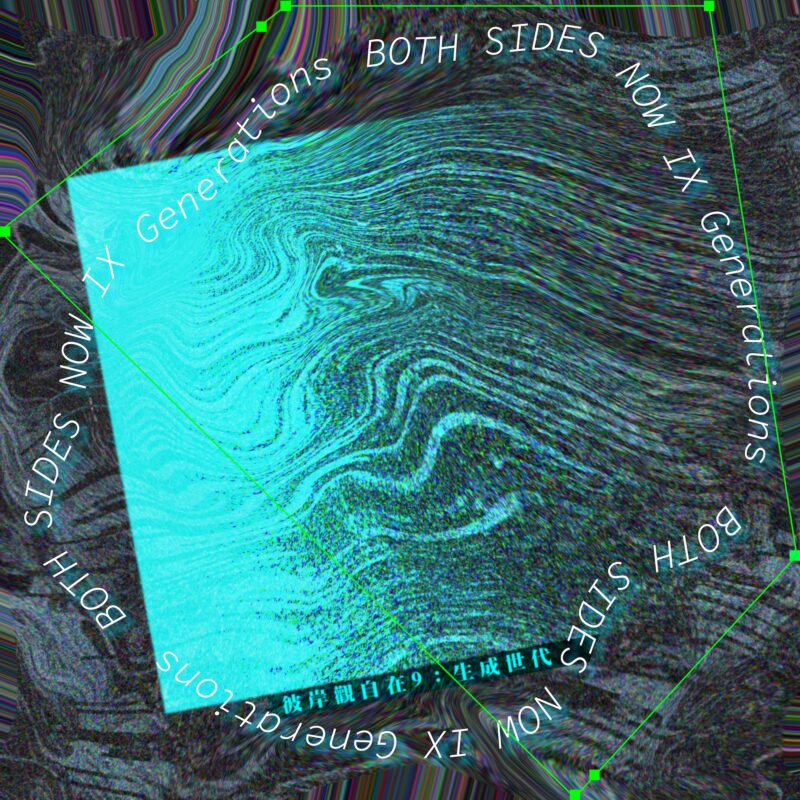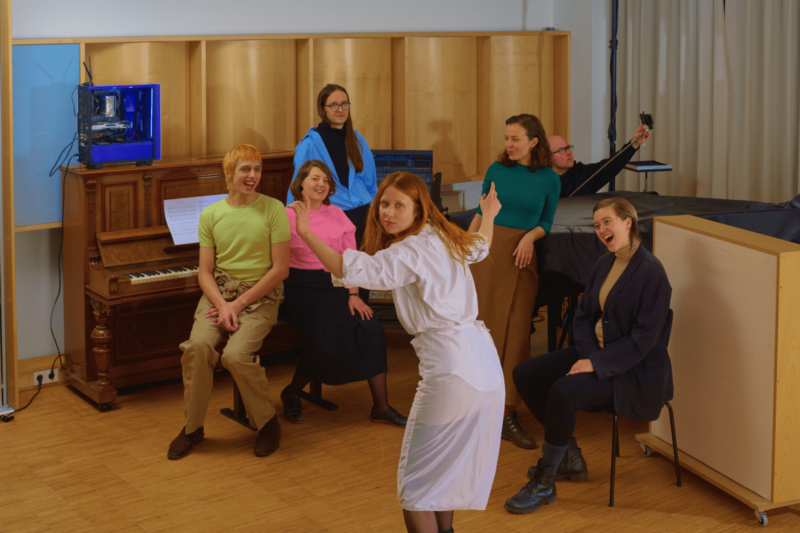Multi-instrumentalist, vocalist and producer Anil Sebastian premiered their immersive short film Daffodil today on NOWNESS
Directed by Thiing Studios and written by Anil Sebastian, Daffodil explores the future of artificial intelligence and looks at what it means to be human and how we define identity. Combining animation by Thomas Rawle with slick live action footage and archival footage from Sebastian’s childhood, Daffodil is a surreal examination of the moral implications of artificial intelligence through Sebastian’s imagination. Set in the near future, Daffodil tells the story of a scientist (played by Anil Sebastian themself) gone rogue and we see him attempting to bring back the conscious mind of a child in the form of an AI. In a parallel, otherworldly meta-verse this playful creature is being created through animation. Paired effortlessly with the film and archival footage, Sebastian’s exquisite avant-garde art pop soundtrack provides the perfect backdrop for this mesmerising cinematic experience. We managed to have a quick chat with Anil ahead of the film’s premiere today Wednesday 28th October 2020.

Firstly Anil, congratulations on creating such an extraordinary piece of work.
Thank you – it’s been epic and I’ve learned a lot from it.
The ethics of the act and ownership of creation are central in the piece and rendered beautifully and movingly. How did you engage with the subject while you were developing this work? Are there specific thinkers, makers and writers whose work you drew on?
My starting point was consciousness. I read a lot of Daniel Dennett – I had such a strong emotional reaction to his arguments that not only do we not understand our own consciousness but that half the time our brains are actively fooling us – we have no idea what is going on up there. Perhaps consciousness isn’t anything particularly otherly – perhaps it is algorithmic and could therefore be created by us in AI? That lead me on to Derek Parfit’s beautiful work around personal identiy. Can it be replicated? Can we be remade? Can we be cut and pasted into a new body? We each think of ourselves as one constant unique identity moving through time – but what if we aren’t? Watching back my first ever film made at 10 with a camcorder, I found myself in tears at seeing a tiny forgotten fragment of my life as it was then. If you could ‘bring back’ someone you lost as they were then, what would you ask them? Would it even be them? When we think about whether AI might one day be conscious it feels uncomfortable – we want to believe so much that consciousness exists and that it is something special and otherworldly. In Daffodil, when I don’t recognise the dark, playful creature as the person I’ve tried to bring back will I hit delete thinking I’ve failed? In doing so perhaps the real tragedy is not knowing the beautiful underwater metaverse they have made and losing it. I wanted it to be personal – something I could feel into – deeply.
There is a very clearly articulated visual world in this piece; how influential has your work as a scientist been on the development of the aesthetic in this piece?
In our very first chats my brother Ingmar and Thomas Rawle the director and animator at Thiing Studios, I was really obsessed with having more physics in the film – but it was beginning to feel too much like a thought experiment – too theoretical and no heart. It had to have heart.
Watching back the archive footage I found of 10 year old me from the early rushes of Daffodil, I felt really sad – this feeling I couldn’t describe. There was a part where our garden pond had fallen into murky disrepair during my father’s long illness. Looking into that dark water, what kind of underwater world would I have made for myself in my own AI/VR metaverse then if I could have?
I’ve never quite belonged anywhere and with that there’s often been this constant desire for something that does not and probably cannot exist, for something other than what is in the here and now. This was our starting point – so we went underwater, and Thomas began to create this incredibly detailed underwater outer space surreal place.
How did you bring your artistic collaborators into your vision of this piece?
It was a really back and forth – I guess – iterative process. Ingmar, my brother works for the UK Space Agency and is also an incredibly musician. I began with lyrics – and working from those to bring in the narrative. I’m in an Icelandic band called Hrím with Cherif and so we’re practically family. We also worked together on my Arts Council funded trAnSition project coding a special AI vocal app.
The soundscape in the film is profoundly affecting and seems integral to the experience of it. Can you talk a bit about how you went about its development?
At the same time as beginning work on the film, I’d been making songs with Jake Miller. We were at his flat making a song using his Prophet 6 – and I sampled what we recorded there, stretching out the chord and resquencing them – that became the basis for the first piece of music for the film – Flatlander.
At the same time as all this high tech stuff, I’d been working with an incredible harpist called Glenda Allaway – performing just her and I – it was my antidote – to just be in real acoustic spaces and be fully in the moment and so we wove in her playing my harp arrangements as one of the core sonic elements for the film. A lot of those textures got stretched out and manipulated using some really stunning time stretching algorithms Guy Sigsworth introduced me to. I also created some choral pieces one of which, Súton (a final dying light) was used in the film. It was such a beautiful coming together to bring in London Contemporary Voices to perform those parts, the choir I co-founded. The music was layered up, and sculpted back many times – hundreds of layers with Tom creating the animations based on what he was hearing – so in many ways the opposite way around to most films|!
Anil Sebastian Daffodil can be watched on NOWNESS
Daffodil has been created with support from Momentum Funding by PRS Foundation, Arts Council and National Lottery.
About the Artist
Anil Sebastian is a multifaceted artist, producer and vocalist producing some of the most unique and other-wordly music to emerge from the UK in recent years. As well as their solo identity Anil Sebastian is also in Hrím , their band with Icelandic singer Ösp and Japanese producer Cherif Hashizume. Anil Sebastian is the founder and director of the legendary London Contemporary Voices Choir. The choir has performed at several Burberry fashion shows, The British Fashion Awards , the 2020 Tommy Hilfiger show, two BBC Proms and also features on the Harry Potter and The Cursed Child soundtrack. Anil’s choral version of Amber Run’ s ‘I Found’ which LCV performed with the band for Mahogany sessions has had over 4 million views. Having released their debut album “Mesonoxian”,
co-produced by Ingmar Kamalagharan and Cherif Hashizume (Jon Hopkins, Brian Eno, David Byrne) in late 2016, collecting support on the way from i-D, Stereogum, Clash and Line of Best Fit online as well as radio support across BBC Radio 2, BBC Radio 2, BBC Radio 6 Music and BBC Radio London.








